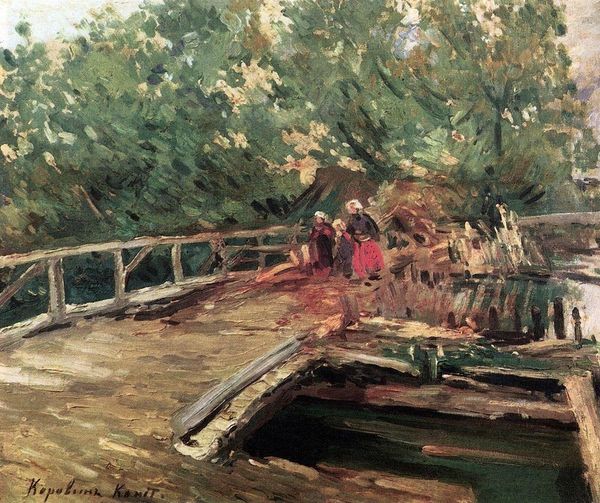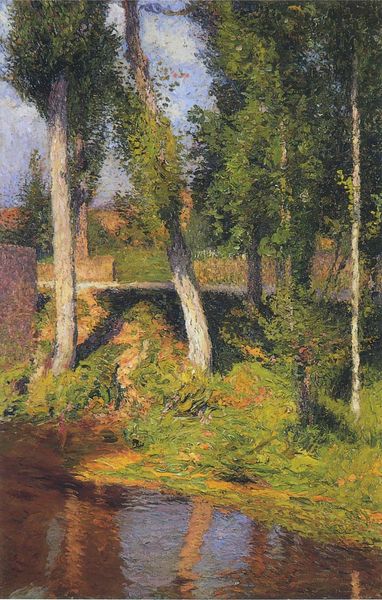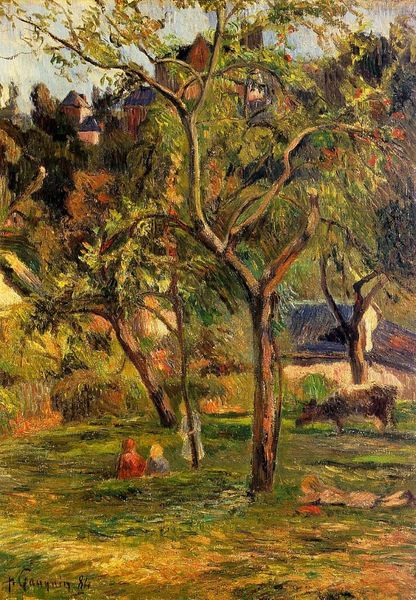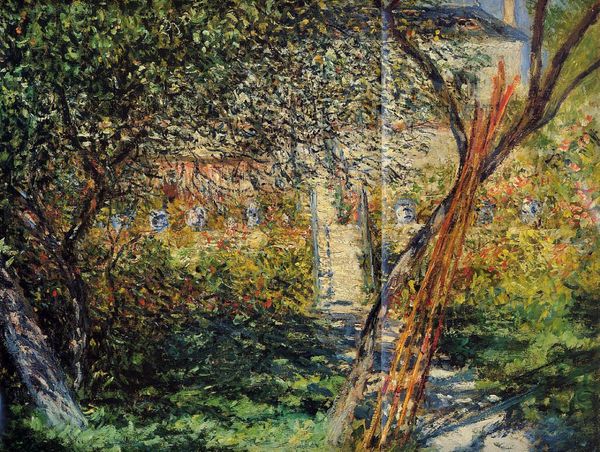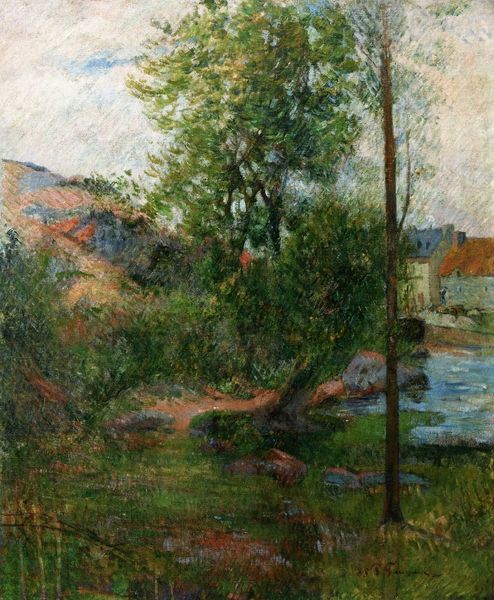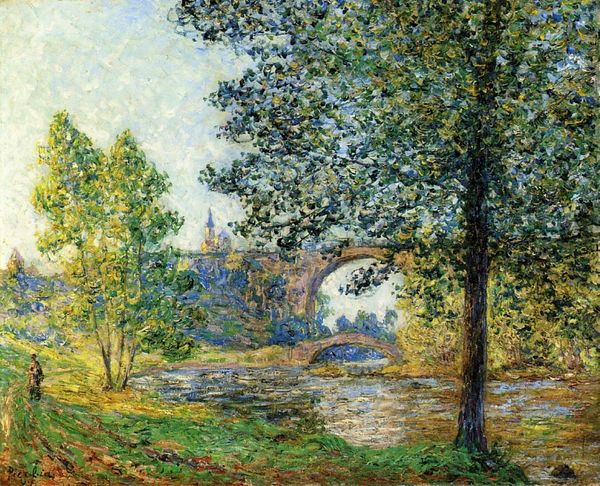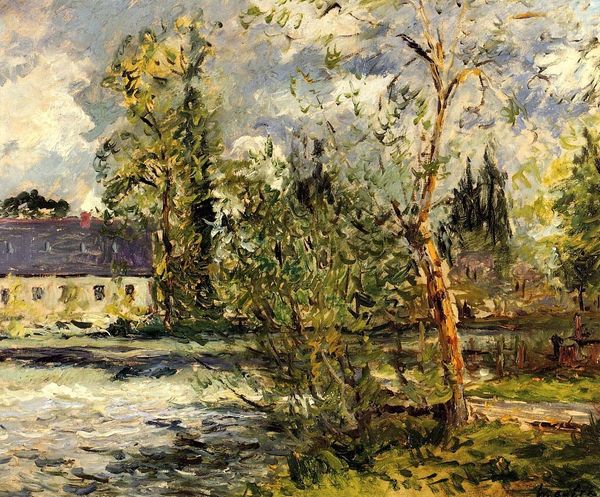
Copyright: Public domain
Editor: We're looking at Theodore Robinson's "Bridge near Giverny," painted in 1892 using oil on canvas. I’m struck by how the trees in the foreground both frame and almost obscure the bridge itself. What aspects of this painting stand out to you? Curator: I find it compelling to consider Robinson's plein-air technique, bringing the means of production front and center. Look at the visible brushstrokes, the quick, almost haphazard application of paint. What does that tell us about the artist's relationship to labor, and the growing market for quickly produced landscapes for urban consumers? Editor: That's an interesting perspective. I was focusing on the atmospheric effects, but I see what you mean. How does the material execution relate to the subject, the bridge itself? Curator: The bridge, a symbol of industry and connection, is rendered with the same fleeting touch as the natural elements. Robinson is democratizing the image, treating manufactured structures and nature equally, highlighting the materiality of paint itself. Is he suggesting a blurring of the boundaries between the industrial and the natural through this treatment? Editor: So you’re saying he’s leveling the playing field, presenting the bridge not as a monumental feat of engineering, but just another part of the landscape, defined by the same material processes? Curator: Exactly! And think about who would be purchasing these paintings. Middle class patrons seeking representations of leisure and nature, sanitized views of a world increasingly shaped by industrial production and consumption. Does the seemingly innocuous nature of the subject matter then take on a more critical edge? Editor: I never thought about it that way. I always just saw the Impressionists as celebrating beauty. Curator: Impressionism wasn’t just about capturing light. It was also about selling a lifestyle. Considering the material conditions helps us understand the full picture. Editor: Thanks, I’ll definitely look at Impressionism differently now, focusing more on how they engage with the society and economy of their time.
Comments
No comments
Be the first to comment and join the conversation on the ultimate creative platform.
